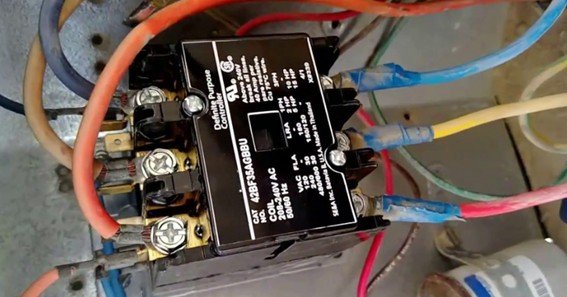An AC contactor is a crucial electrical component in air conditioning systems, acting as a switch to control the flow of electricity to various parts such as the compressor and condenser fan. When your thermostat signals the need for cooling, the contactor engages, allowing electrical current to power these components. Conversely, when the desired temperature is reached, the contactor disengages, interrupting the electrical flow and turning off the system.
Functionality of an AC Contactor
The primary role of an AC contactor is to manage high-voltage power delivery to the air conditioner’s components. It operates electromagnetically: when the thermostat sends a low-voltage signal (typically 24 volts), it energizes the contactor’s coil, creating a magnetic field that pulls down a set of contacts. This action closes the circuit, permitting high-voltage electricity to flow to the compressor and fan motors. When the cooling cycle ends, the coil de-energizes, and the contacts return to their default open position, halting the electrical flow.
Common Issues and Maintenance
Over time, AC contactors can experience wear and tear due to frequent electrical arcing, leading to pitting or corrosion of the contacts. This degradation can result in poor electrical connectivity, causing the air conditioner to malfunction or fail to start. Regular maintenance, including inspecting the contactor for signs of damage and ensuring connections are secure, is essential for the efficient operation of your AC system.
Replacing an AC Contactor
If a contactor is found to be faulty, replacing it involves several steps:
-
Power Down: Ensure the power supply to the air conditioning unit is completely turned off to prevent electrical shock.
-
Access the Contactor: Open the access panel on the outdoor condenser unit to locate the contactor.
-
Document Wiring: Take a photograph or make notes of the wiring connections to aid in accurate reinstallation.
-
Remove the Faulty Contactor: Carefully disconnect the wires and unscrew the defective contactor from its mounting.
-
Install the New Contactor: Attach the new contactor, reconnect the wires as per your documentation, and secure it in place.
-
Restore Power and Test: After ensuring all connections are correct, restore power and test the air conditioning system to confirm proper operation.
FAQ
1. What are the signs of a failing AC contactor?
Common indicators include the air conditioner not starting, making a humming noise without engaging, or the system running continuously without shutting off.
2. Can I replace an AC contactor myself?
Yes, with proper precautions and understanding of electrical components, a homeowner can replace an AC contactor. However, if you’re unsure, it’s advisable to consult a licensed HVAC technician.
3. How often should an AC contactor be replaced?
The lifespan of a contactor varies but typically ranges from 5 to 10 years. Regular maintenance can help extend its service life.
4. What causes an AC contactor to fail?
Factors include electrical arcing, dirt and debris accumulation, insect infestation, and general wear from frequent cycling.
5. Is a contactor the same as a relay?
While both are switches, contactors are designed to handle higher current loads compared to relays and are typically used in applications like air conditioning systems.










